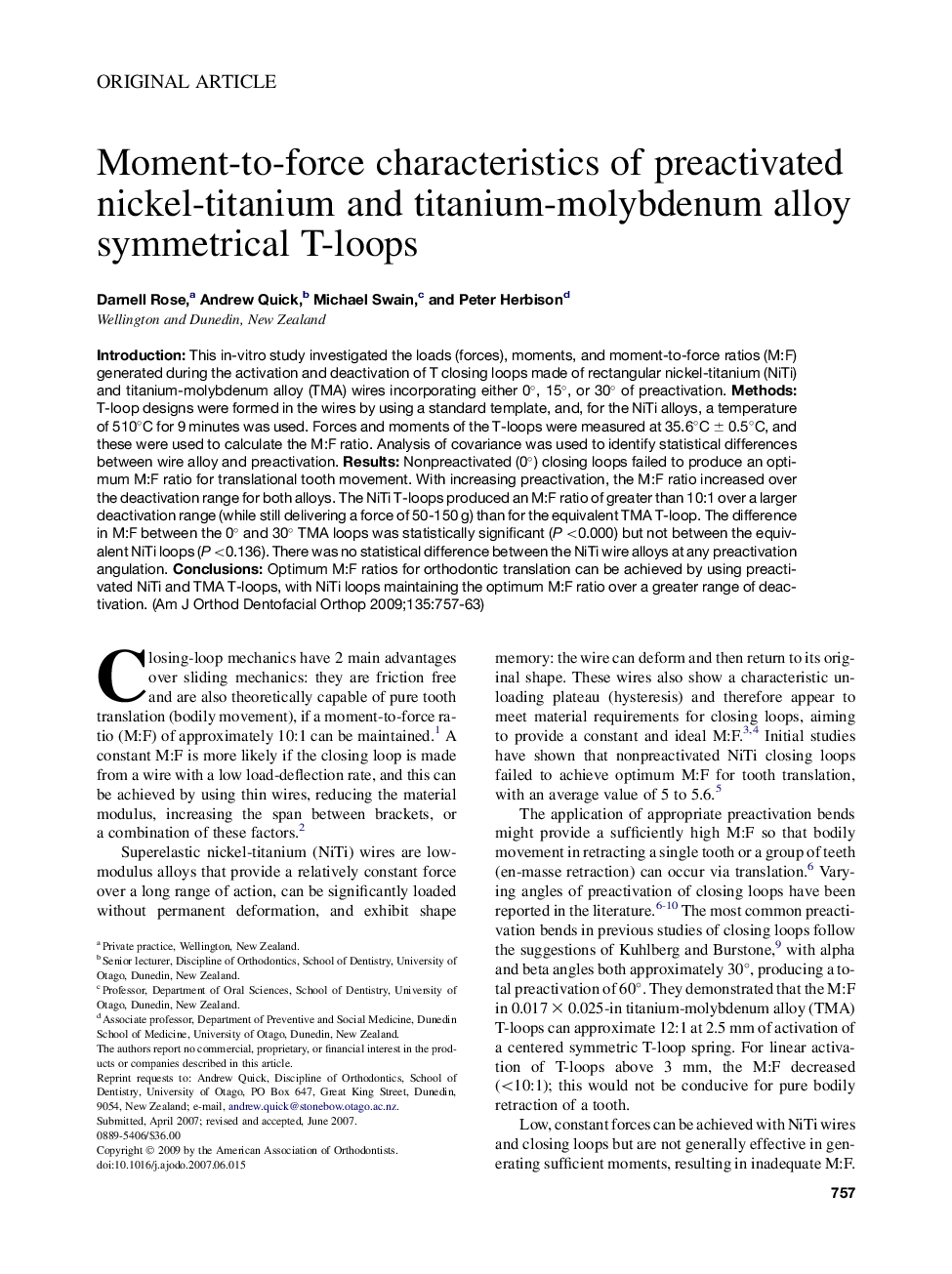| Article ID | Journal | Published Year | Pages | File Type |
|---|---|---|---|---|
| 3118244 | American Journal of Orthodontics and Dentofacial Orthopedics | 2009 | 7 Pages |
IntroductionThis in-vitro study investigated the loads (forces), moments, and moment-to-force ratios (M:F) generated during the activation and deactivation of T closing loops made of rectangular nickel-titanium (NiTi) and titanium-molybdenum alloy (TMA) wires incorporating either 0°, 15°, or 30° of preactivation.MethodsT-loop designs were formed in the wires by using a standard template, and, for the NiTi alloys, a temperature of 510°C for 9 minutes was used. Forces and moments of the T-loops were measured at 35.6°C ± 0.5°C, and these were used to calculate the M:F ratio. Analysis of covariance was used to identify statistical differences between wire alloy and preactivation.ResultsNonpreactivated (0°) closing loops failed to produce an optimum M:F ratio for translational tooth movement. With increasing preactivation, the M:F ratio increased over the deactivation range for both alloys. The NiTi T-loops produced an M:F ratio of greater than 10:1 over a larger deactivation range (while still delivering a force of 50-150 g) than for the equivalent TMA T-loop. The difference in M:F between the 0° and 30° TMA loops was statistically significant (P <0.000) but not between the equivalent NiTi loops (P <0.136). There was no statistical difference between the NiTi wire alloys at any preactivation angulation.ConclusionsOptimum M:F ratios for orthodontic translation can be achieved by using preactivated NiTi and TMA T-loops, with NiTi loops maintaining the optimum M:F ratio over a greater range of deactivation.
